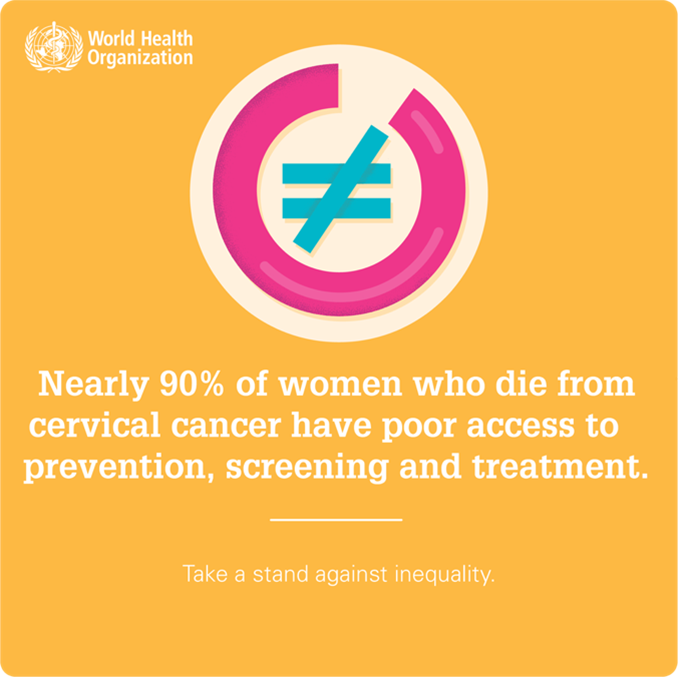
In the second week of our DTM&H course, we had a lecture on Universal Health Coverage (UHC). Broadly speaking, the concept is to ensure everyone has access to essential health services without suffering financial hardship as a consequence. It aims to address the major causes of death and disease (1).
The World Health Organisation uses 16 essential services to assess the level and equity of health coverage in different countries and monitor progress towards UHC. Cervical cancer screening is one of four non-communicable diseases highlighted and the only cancer directly mentioned in the list.
Our class raised the question - why is it that cervical cancer has been specifically selected as a focus in this list? It’s the fourth most commonly occurring cancer in women and the eighth most common overall, yet lung, breast and colorectal cancers are all three times more frequent (2). So why is it that WHO would choose cervical cancer screening as an important indicator of a strong and equitable healthcare service?
Cervical cancer disproportionately affects women in low-middle income countries (LMIC). It is estimated that 311 000 women died across the world from cervical cancer in 2018. More than 85% of these deaths occurred in LMIC (3).

This disparity can largely be explained by lack of access to primary health care, including preventative measures and screening. Human Papilloma Virus (HPV) can be identified as the cause for the majority of cases of cervical cancer. In most high-income countries, there are immunisation programmes to vaccinate girls against cancer causing strains of HPV. In addition to this there are well established screening programmes that identify and treat pre-cancerous lesions. These interventions have proven to work and are cost-effective, preventing up to 80% of cervical cancers in these countries (3).
So, we have the knowledge and technology to eliminate cervical cancer as a public health problem. Despite this, in LMIC preventative measures are not yet widely available. Whether a woman has access to these services largely depends on where she is born, lives and her socio-economic status. On top of this, a woman’s risk of developing cervical cancer increases in countries with higher levels of gender inequality (4). It is therefore not surprising that in low resource settings, diagnosis often occurs once symptoms have developed, generally at an advanced stage. Additionally, in these areas there is often limited access to interventions to treat late stage disease, such as surgical options and chemotherapy, increasing mortality rates. When there is no hope of recovery, there is also little capacity for palliative care (4).
If no action is taken, it is predicated that deaths from cervical cancer will rise by nearly 50% in the next two decades. To tackle this, WHO has set the 90-70-90 targets. By 2030, each country should aim to have 90% of girls vaccinated against HPV before age 15, 70% of women screened for cervical changes by the age of 35 and again by 45 and 90% of women diagnosed with cervical disease treated. If this is achieved, it is estimated that 70 million cases could be avoided, and 62 million lives could be saved in the next century (5).
With all this in mind, I can see why a disease with feasible, cost-effective solutions that disproportionally affects some of the world’s poorest women, gets a place on the World Health Organisation’s list.
Reference List:
(1) WHO Universal Health Coverage
(2) WCRF - Worldwide cancer data
(3) WHO - HPV and cervical cancer
(4) The Lancet
(5) WHO - Global strategy to accelorate cervical cancer elimation